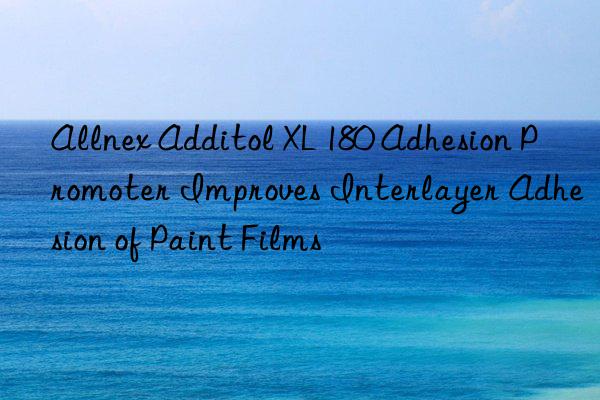
Product Features
Special phosphate to improve the adhesion between paint layers
Delivery form
Active substance content is about 98%
Appearance
Brown transparent liquid
Typical Performance Data
|
Performance |
measurement standard |
unit |
value |
|
Dynamic Viscosity |
DIN EN ISO 3219;25 1/s;23℃ |
mPa ·s |
200 -500 |
|
Iodine color value |
DIN 6162 |
|
≤ 15 |
|
acid value |
DIN EN 3682 |
mg KOH/g |
260 -340 |
|
Non-volatile content |
DIN 55671;150℃;10min;-g |
% |
88 -92 |
|
PHvalue |
DIN EN ISO |
|
2 -3 |
|
Density (liquid) |
DIN 53217-3;20℃ |
g /cm3 |
1.02 |
|
Flashpoint |
( Pensky-Martens) DIN EN 22719 |
℃ |
72 |
Special Features
Additol XL 180 can improve the intercoat adhesion between baking paint and fast drying air drying paint to electrocoat primer, white electrocoat and primer.
Dilution
Additol XL 180 can be diluted with aliphatic hydrocarbons, ketones, esters and alcohols, but not directly diluted with water.
Recommended use
Additol XL 180 improves intercoat adhesion between topcoat and primer. Additol XL 180 has excellent compatibility with many resin systems, so it is a general additive. If used in an aqueous system, Additol XL 180 is best neutralized with an amine compound (a better amine compound is triethylamine). Alkyd or acrylic baking paints Additol XL 180 is used for electrodeposition primers and white paints to increase intercoat adhesion and improve flexibility, but in single coats of iron and aluminum Additol XL 180 appears to be Doesn't seem very effective. Additol XL 180 and its salts can be combined with non-ionic and anionic surfactants, but the compatibility with cationic substances should be checked individually to prevent the interaction to cause flocculation and reduce gloss. Based on experience until now, the use of Additol XL 180 has neither impaired weather resistance nor reduced storage stability.
Processing
Due to the possibility of a slight reduction in viscosity, Additol XL 180 should be added to the finished paint prior to final viscosity adjustments. The magnitude of the effect of Additol XL 180 is essentially dependent on the nature of the resin. Usually, adding 0.1-1% to the total amount is sufficient. The effectiveness of this additive should be checked individually before each batch of paint is produced. Safety goggles must be worn if Additol XL 180 is neutralized with amine compounds.
Storage
The storage period of Additol XL 180 in the original barrel below 25°C is at least 12 months.
Description
The non-volatile content of the product is not an absolutely constant value, but changes according to the heating temperature and time during the test. Usually, the value of the non-volatile matter content obtained by this method is only relative and not absolutely determined, because there are factors such as solvent residue, thermal decomposition and evaporation of low-molecular components. Therefore, the same type of product The main test method for different batches adopts DIN EN ISO 3251 (09/95, Page 2) standard.
Processing
Due to the possibility of a slight reduction in viscosity, Additol XL 180 should be added to the finished paint prior to final viscosity adjustments. The magnitude of the effect of Additol XL 180 is essentially dependent on the nature of the resin. Usually, adding 0.1-1% to the total amount is sufficient. The effectiveness of this additive should be checked individually before each batch of paint is produced. Safety goggles must be worn if Additol XL 180 is neutralized with amine compounds.
Storage
The storage period of Additol XL 180 in the original barrel below 25°C is at least 12 months.
Description
The non-volatile content of the product is not an absolutely constant value, but changes according to the heating temperature and time during the test. Usually, the value of the non-volatile matter content obtained by this method is only relative and not absolutely determined, because there are factors such as solvent residue, thermal decomposition and evaporation of low-molecular components. Therefore, the same type of product The main test method for different batches adopts DIN EN ISO 3251 (09/95, Page 2) standard.

 微信扫一扫打赏
微信扫一扫打赏

